Affiliate disclosure: This post may contain affiliate links. Please see our Privacy Policy.
Fig Wine is a delicious way to use your fig harvest this season. Fig trees can be prolific, and a homemade wine with figs is an easy way to create a bumper crop. You can also use honey instead of sugar to turn your wine into a fig mead!
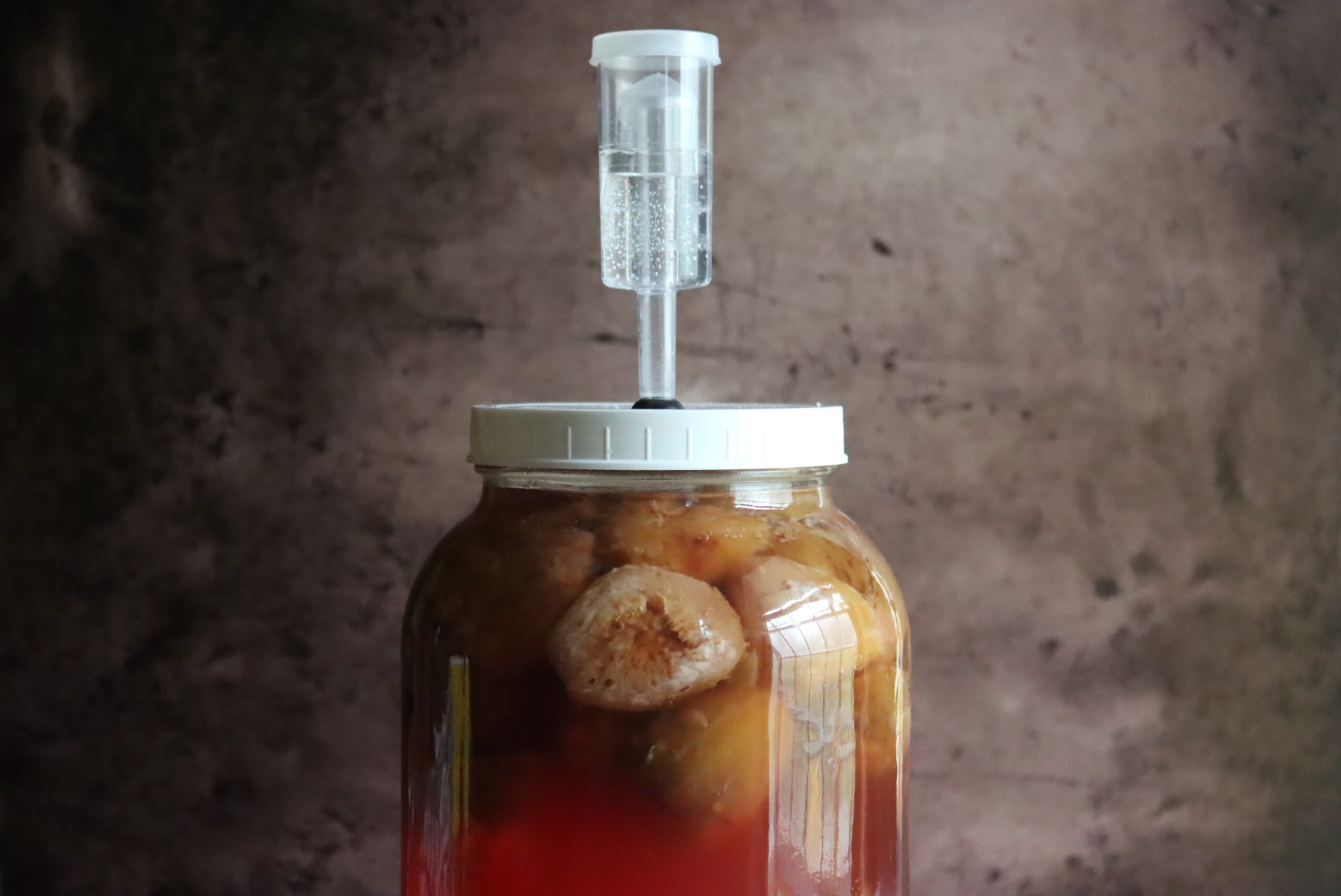
Making fig wine from fresh figs will yield a delightful drink that can be enjoyed shortly after bottling or allowed to mature with age. Substitute honey for sugar to make fig mead!
Fig wine possesses a rich and unique flavor. While fig wine made from dehydrated figs can be intense and almost liqueur-like, fig wine made from fresh figs is less heavy.
As figs are low in sugar and acidity, fig wine requires you to add these elements. Once done, you can craft a lovely dry wine that can be back-sweetened before bottling or enjoyed as is.
To yield the best fig wine, select figs at their ripest stage. You want figs that are soft, not hard. Figs will not continue to ripen once picked, so steer clear of the firmer ones. Additionally, avoid figs with a sour smell, as these are past their prime.
Making fig wine is relatively simple and follows the same steps as making any small-batch country wine.
You’ll chop up your fruit and add sugar (or honey) for sweetness, other winemaking additives, and wine yeast. This medley will ferment for 5 to 7 days, during which the most active fermentation will occur.
Next, you’ll siphon the wine into a clean fermentation vessel, discarding the fruit and leaving the sediment behind. Here, the wine can ferment more slowly, hopefully somewhere cool and dark, for anywhere from 6 weeks to 6 months.
Now, you can bottle your wine and let it mature for a few months before drinking it. If you can wait that long, fig wine aged for a year or more will be even more pleasing.
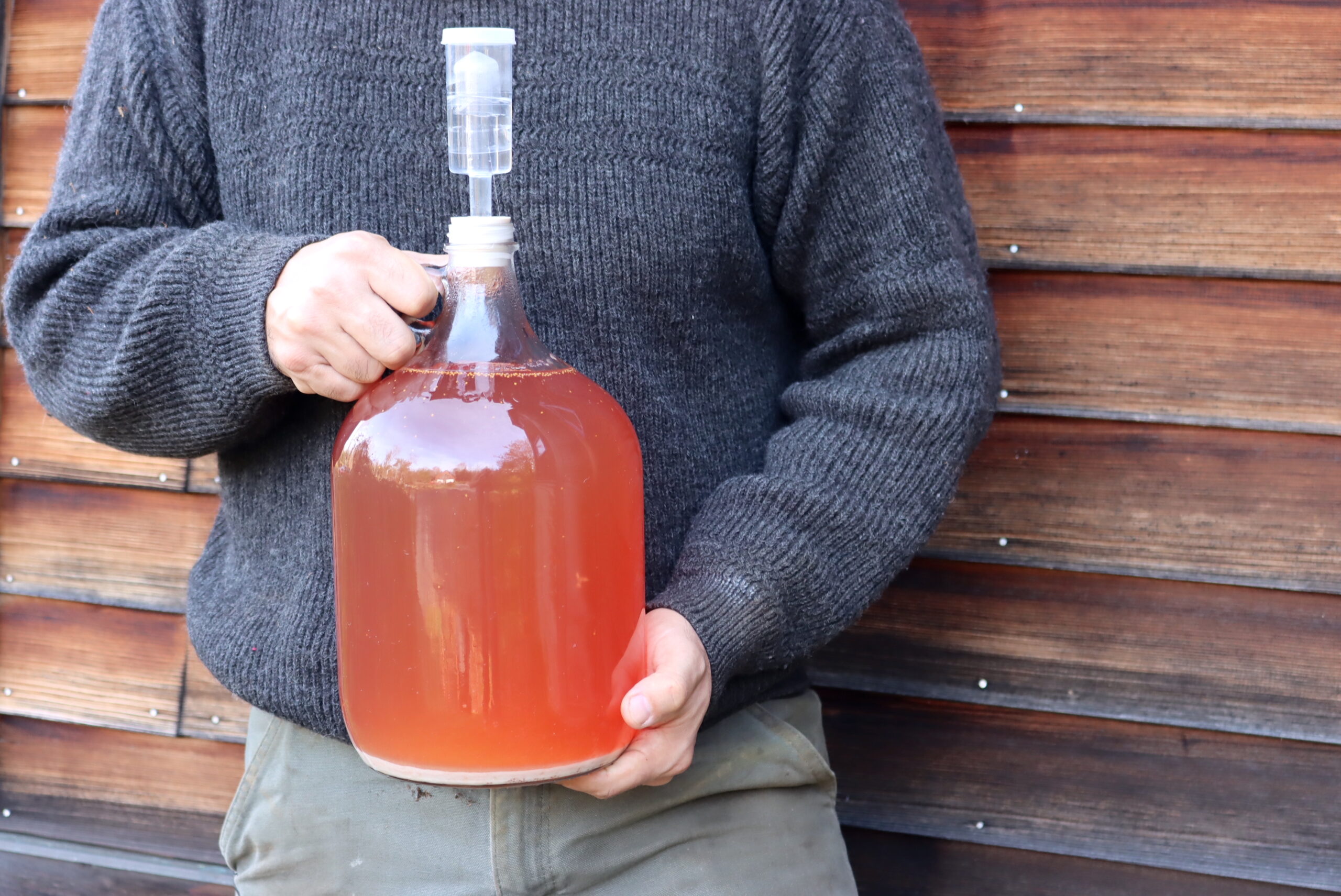
I’ve written this recipe assuming the reader is familiar with standard winemaking terms and the essential practice of Winemaking. For those newer to this hobby, I have several guides to support you:
- Beginners Guide to Making Fruit Wines will guide you through each winemaking step.
- How to Make Mead (Honey Wine) is similar but will cover all the particularities when working with honey instead of sugar.
- Equipment for Winemaking overviews all the equipment needed to make that first batch of wine besides the ingredients.
- Ingredients for Winemaking will include everything else you’ll need besides wine yeast.
- Yeast for Winemaking can seem complicated, given the dozens of common strains (and hundreds of obscure ones). This guide will help you understand them all.
Ingredients for Fig Wine
A few simple ingredients will be needed to make fig wine.
If you’re new to Winemaking and wish to understand the purpose behind each component, I recommend you read this guide on winemaking ingredients.
To make a one-gallon batch of fig wine, you will require:
- 4 lbs figs
- 1-¾ lbs granulated sugar (3-½ cups)
- 1 tsp Yeast Nutrient
- 3-½ tsp Acid Blend
- Water to fill
- Wine Yeast
You’ll need about 4 pounds of fresh figs to make a one-gallon batch of fig wine.
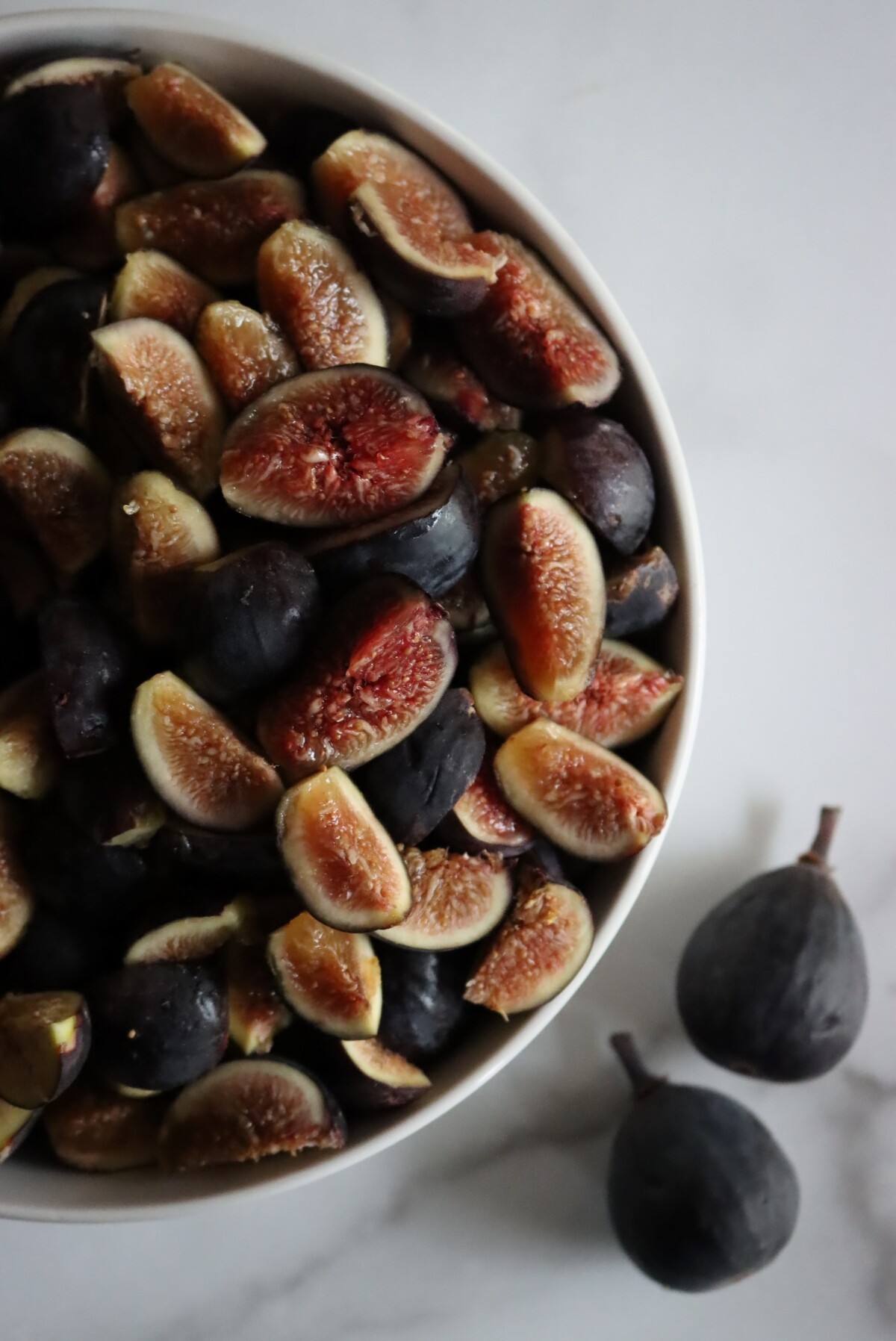
In addition to this, you will also need 1-¾ pounds of granulated sugar — at 2 cups per pound, that’s about 3-½ cups.
To make fig mead or fig melomel, substitute honey for sugar. A one-gallon batch needs about 1 quart (3 lbs of honey).
You won’t need any wine tannin as figs have enough tannins on their own, and being a low-pectin fruit, no pectic enzyme will be necessary, either. You will need an acid blend, however.
In addition to the acidity improving the flavor of your wine, the yeast needs added acidity to ferment. Figs aren’t particularly acidic as a fruit and won’t ferment right without a little acid blend (or lemon juice).
The last two items will be a wine yeast and a packet of yeast nutrients.
Yeast for Fig Wine
As for wine yeast, Red Star Montrachet is a good option.
Red Star Montrachet or Premier Classique has a relatively low alcohol tolerance (about 13%), which is good for creating a wine with more residual sweetness. For a more robust, dryer wine, you can use Lalvin EC-1118, which has an alcohol tolerance of 15% up to 18% in ideal conditions). Both wine yeasts have a perfect temperature range of 59°F to 86°F.
Winemaking Equipment
Apart from these ingredients, some essential winemaking equipment will also be needed. This includes:
- One-gallon mouth Fermentation Vessel for primary fermentation
- One-gallon narrow Neck Carboy for secondary (often sold as a kit with a rubber stopper and water lock together)
- Rubber Stopper and Water Lock (if not included above)
- Brewing Siphon
- Wine Bottles or Flip-top Grolsch bottles
- Bottle Corker and clean, new corks for bottling the wine
- Brewing Sanitizer
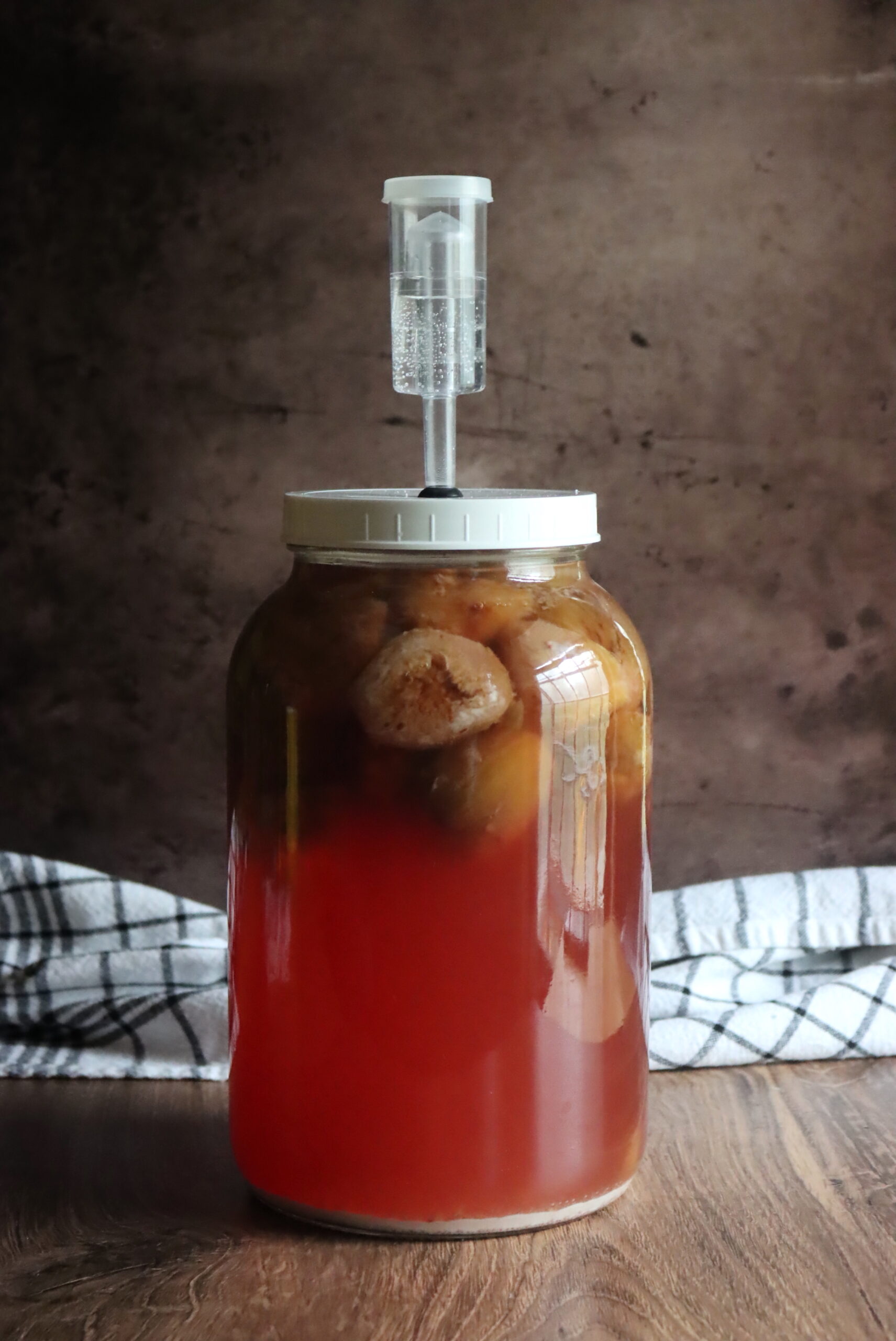
Making Fig Wine
To make fig wine, you’ll first need to process your figs. Clean and remove as many stems as possible before chopping or mincing the figs.
Place processed figs in a brew bag and move to your primary fermentation vessel (preferably a wide-mouth carboy). Heat a few quarts of water on the stovetop and add the sugar, stirring to dissolve.
Pour the water into the carboy, add the acid blend, and add the yeast nutrient. Once cool, add the wine yeast.
Be sure to dissolve your yeast in room-temperature water and allow it to rehydrate for 10 minutes before adding it. After adding your wine yeast to the carboy, top it with enough water to leave 2 inches of headspace and seal with a water lock.
You should see a very active bubbling fermentation in a day or two. Let it ferment here for about 5 to 6 days. By then, the fermentation should have begun to slow.
Remove and discard the brew bag, then siphon the wine to a clean fermentation vessel for secondary fermentation, leaving the sediment behind.
Top with more water to bring the wine up to the neck of the carboy — this will expose less of the wine to the air. Seal with your water lock and ferment for 3 to 4 weeks.
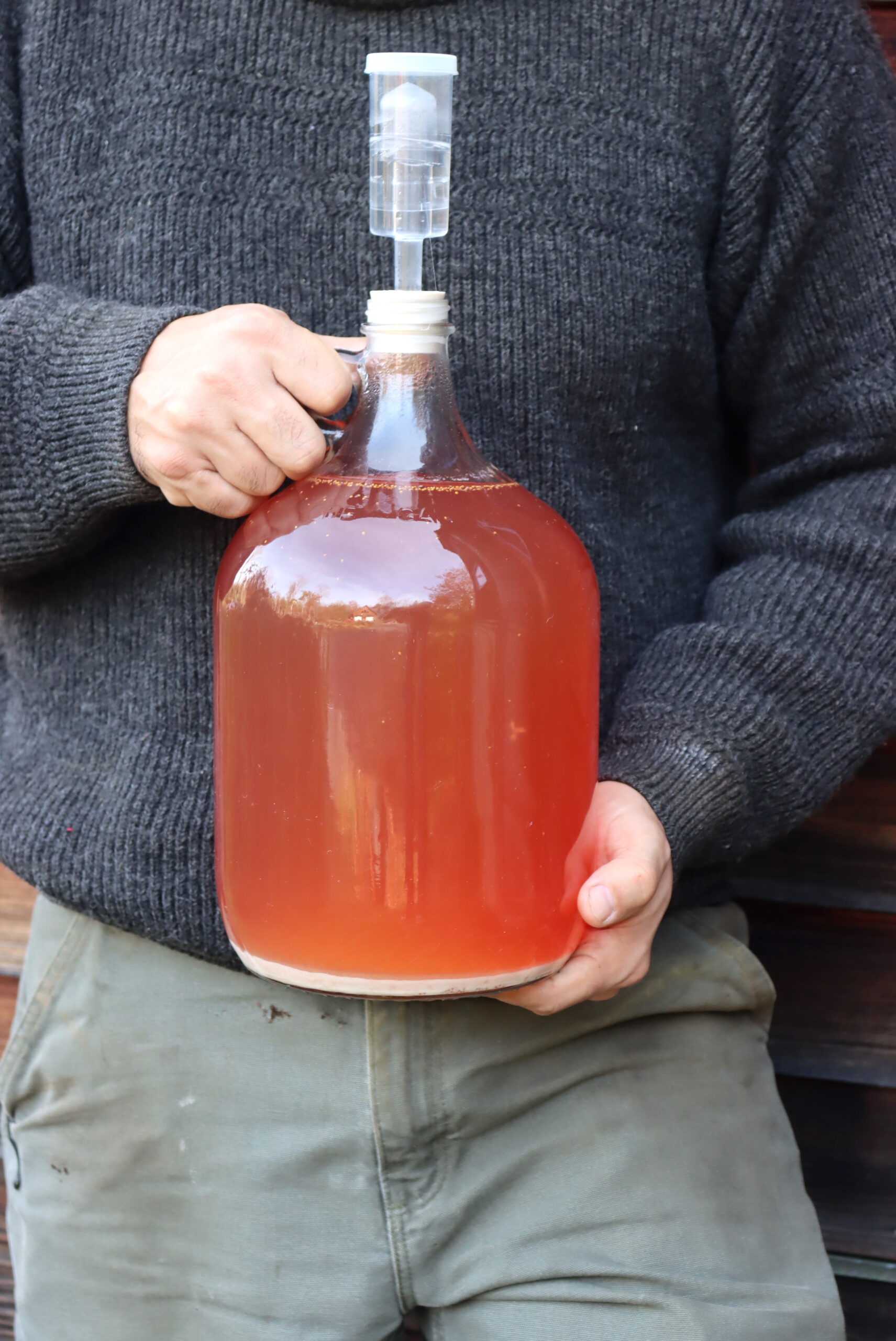
It is a good idea to rack the wine again to help it clear, topping it up with more water and attaching the airlock. Wait another two months before racking again.
Once the wine has cleared, sample it. If it is too dry for your taste, you can back-sweeten it.
To back-sweeten your wine, rack it in a clean container and stabilize it by adding 1 Campden tablet and ½ teaspoon potassium sorbate.
Wait 24 to 48 hours before adding sugar to ensure all the yeast has died off and your sugar does not restart the ferment.
Next, add sugar by making a simple syrup of equal parts water and sugar (½ cup water and ½ cup sugar are suitable for a one-gallon batch of wine). Add this syrup to your wine and refit the water lock. Wait about a week before bottling to be sure the ferment doesn’t restart.
If you prefer not to stabilize the wine before sweetening, add sugar and let the wine ferment for another month or until all signs of fermentation have died out before bottling.
After bottling, let the wine age for at least three months. The wine will improve quite a bit with age, though, so if you can wait longer, the result will be well worth it!
Ways to Preserve Figs
Do you need a few more ways to preserve figs?
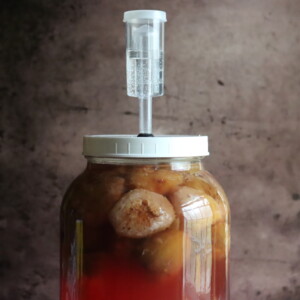
Fig Wine
Equipment
Ingredients
- 4 lbs fresh figs
- 1-¾ pounds Sugar, about 2 cups per pound
- 1 tsp yeast nutrient
- 3-½ tsp acid blend
- wine yeast, see note
- Optional ~ Campden Tablet and Potassium Sorbate for Stabilizing, I do not use these
- Water, to fill
Instructions
- Remove stems from figs and chop before placing them in a brew bag.
- Place the fig-filled brew bag in your wide-mouth carboy.
- Heat a few quarts of water on the stovetop. Add sugar and stir to dissolve.
- Pour over figs. Let cool.
- Add the acid blend and yeast nutrient.
- Add your wine yeast last. (Be sure to rehydrate first in room temperature water for 10 minutes before adding to your carboy.)
- Add enough water to leave two inches of headspace and seal with a water lock.
- Ferment in primary for 5 to 6 days.
- Remove the brew bag and siphon to a clean fermentation vessel for secondary, leaving the sediment behind.
- Top with water as needed and seal with a water lock.
- Ferment for 3 to 4 weeks before racking to a clean container. Add water and refit the water lock.
- Ferment for another 2 months and rack again if needed.
- Sample your wine before bottling and adjust as needed. See notes for info on backsweetening.
- Siphon into wine bottles and seal with corks. Let age 3 months before opening (or wait a year for an even more improved flavor).
Notes
Fig Mead
To make a one-gallon batch of fig mead you will need about 1 quart (3 lbs) of honey. Do note, the time needed in secondary may be longer than for fig wine (as honey is less digestible for the yeast than plain sugar is). Recommended time spent in secondary for fig mead is 2 to 6 months.Yeast
For fig wine, choose a wine yeast with moderate alcohol tolerance, that either ferments clean or adds light fruit flavors. Some good yeast choices include Montrachet (or Red Star Premier Classique) or champagne yeasts like Lalvin EC-1118. See notes within the article for information on the specific qualities of each yeast.Stabilizing and Back Sweetening
If you sample your wine at the end of the ferment and it seems too dry for your tastes, backsweetening is always an option. To backsweeten, first rack to a clean container and stabilize the wine by adding 1 Campden tablet and ½ teaspoon potassium sorbate. (This will prevent the sugar from causing the fermentation to reactivate and build up pressure in your bottled wine.) Wait 24 to 48 hours after stabilizing to add your sugar. Sugar should be added in the form of a simple syrup made from equal parts sugar and water. Add to your carboy and put back into ferment for a week before bottling to ensure the ferment does not restart. As to amounts, about ½ cup of sugar should be enough for one gallon of fig wine. See notes within the article regarding stabilizing and back sweetening.Nutrition
Nutrition information is automatically calculated, so should only be used as an approximation.
Autumn Winemaking Recipes
Are you looking for more winemaking recipes? I have many more fruit, flower, and vegetable wines to try next!
- Apple Wine
- Banana Wine
- Blackberry Wine
- Cranberry Wine
- Elderberry Wine
- Persimmon Wine
- Pomegranate Wine
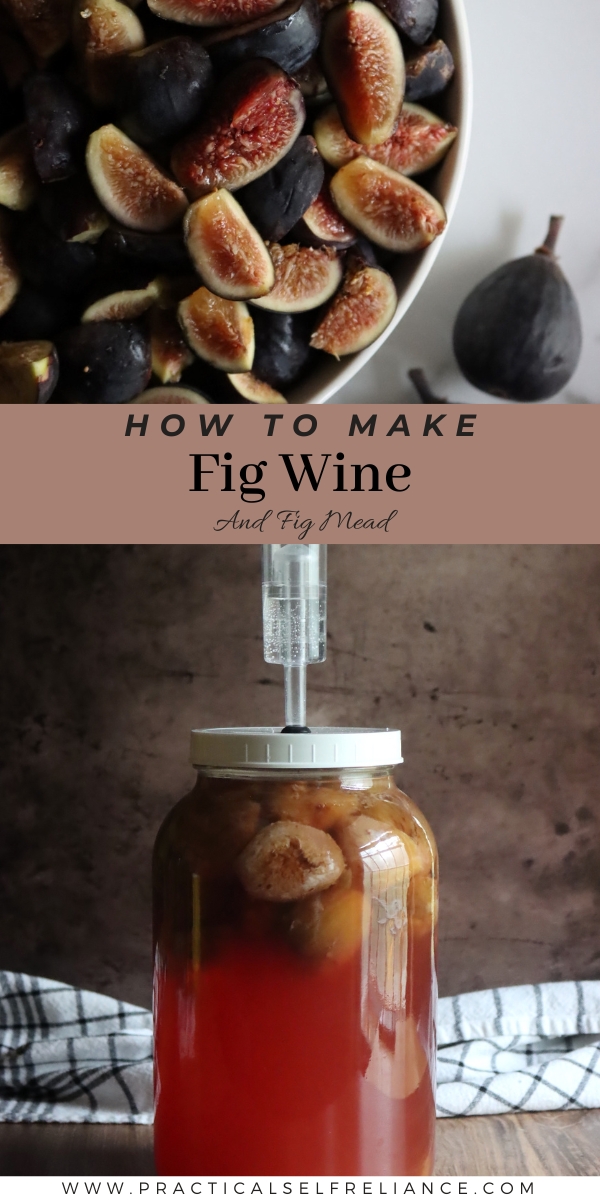



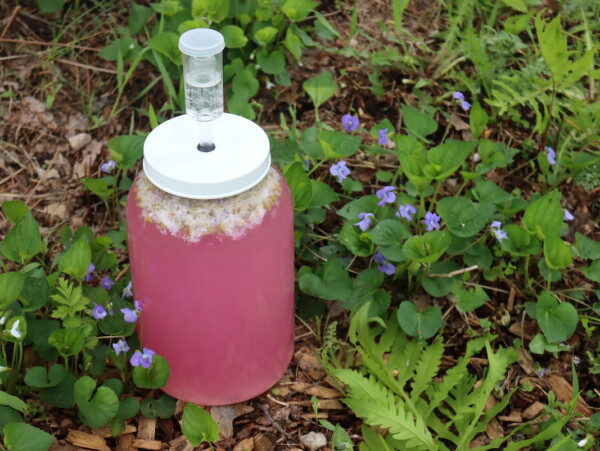










This one came out with an amazingly complex flavor and I’m so glad I made it.